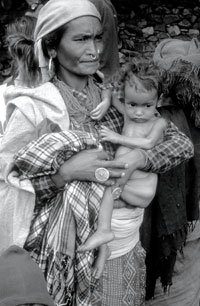 FREDERIC LECLOUX |
The horrific slaughter of 26 children and their teachers last week in the US state of Connecticut was a shock reminder to Americans to urgently address the need for gun control. Nowhere else in the world is the right to bear arms taken as seriously as in the United States, and the latest massacre underlined the necessity to amend the Second Amendment. Passed as far back as in 1791, the law needs a serious revision in an age when assault rifles and other weapons of mass murder have been used by killers. The per capita rate of shooting homicide in the United States is 20 times higher than in Europe. There are over 10,000 murders by firearms in the US every year, compared to 30 in Australia, 37 in Sweden, and 8 in Japan. The frequency of school shootings in the US shows that the adult American's freedom to own a gun is infringing on the right to life of American children.
Here in Nepal, the latest US shootings reminded us of the murder in Kathmandu of 10 members of the royal family by another deranged and gun-crazed individual in 2001. That massacre set off a media feeding frenzy that put Nepal briefly on the global news map. Part of the reason for such lop-sided coverage is the prevalent news paradigm, the parameters the media uses to define an event as newsworthy.
Journalism schools teach students that for anything to have news value, a whole lot of people, preferably well-to-do or living in a rich country, have to die suddenly, all in one place, and it would help if there are interesting visuals. These unspoken, cynical and callous criteria define the threshold of what is deemed important enough for the people to know.
Which means that a textile factory fire that kills 100 workers in Bangladesh, or a typhoon in the Philippines that kills more than 1,000 farmers are eclipsed by relatively smaller events in the industrialised world. Seventy thousand Nepali children die every year of diarrhoeal dehydration, pneumonia and other vaccine-preventable deaths. That is about
200 children dying needlessly every day, but it doesn't merit headlines around the world, not even in Nepal, because they are mostly poor children in remote areas who die silently and are scattered across the land. The death of 200 children every day in Nepal should be news, but alas, it doesn't fit the standard news format.
To be sure, Nepal has made dramatic progress in child survival.That should be news too, but it isn't. The country's poverty rate has declined to 25 per cent, the national literacy rate has doubled in the past 15 years, enrollment in primary schools is nearly 100 per cent, and there is parity between boys and girls. Nepal's under-five mortality rate is down from 162 per 1,000 births to less than 50 today, and the maternal mortality rate has come down from 850 per 100,000 births to less than 200 in 15 years.
Still, these figures are national averages and mask the glaring disparity between urban and rural areas, between the mainstream and marginalised communities. There are still 200,000 children who are out of school, a quarter of the population is living below the absolute poverty line, and 41 per cent of children under five are underweight which makes them vulnerable to killer infections. Most worryingly, the female literacy rate is plateauing off and the child mortality rate has been stagnant for the last few years.
Nepal's daily tally of child deaths cannot be equated with heinous mass murders like the premeditated shooting of primary school children, but they are crimes against humanity nonetheless. Nepali children are not just dying, they are being killed by state neglect, bureaucratic apathy, corruption and bad governance. There is no other way to put it politely: the lack of accountability resulting from endless political bickering is delaying development and killing our children.


